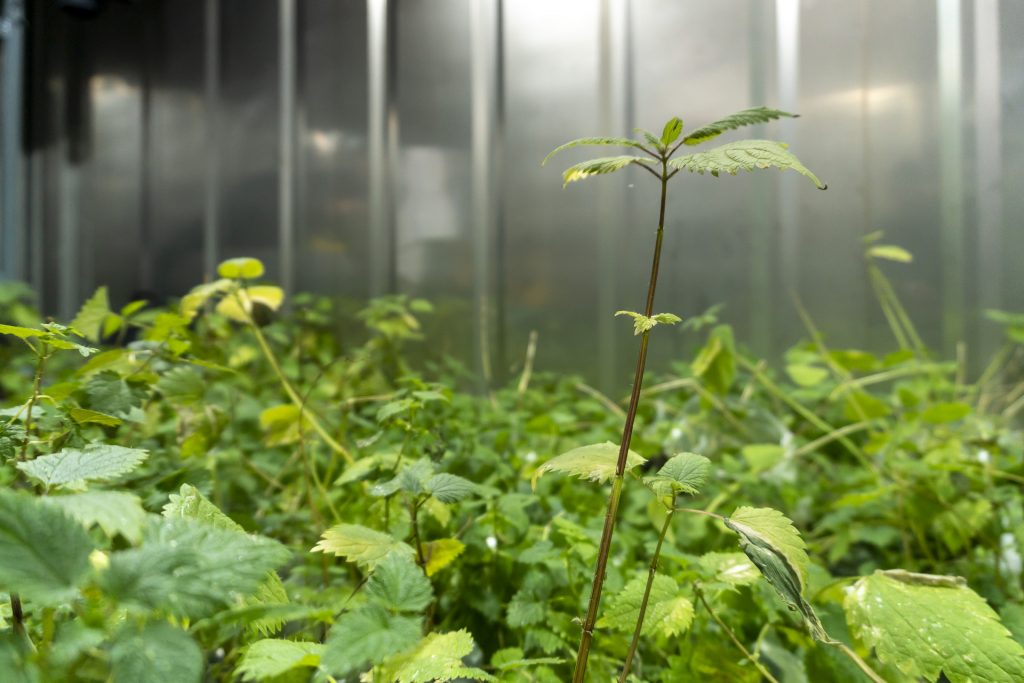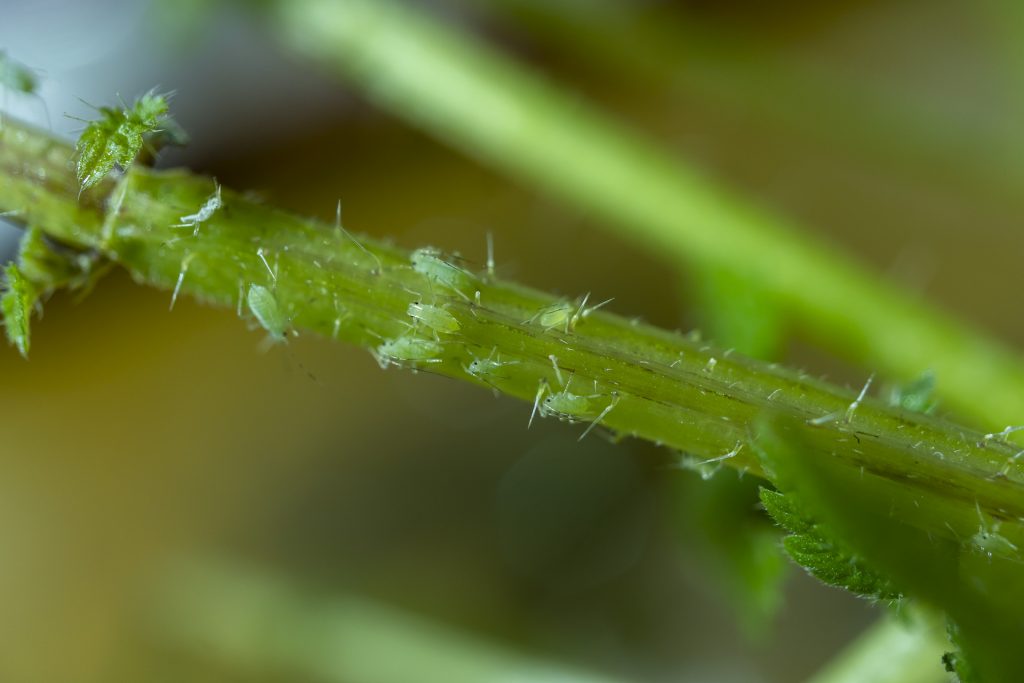Surface waters are polluted with a variety of contaminants, including synthetic pesticides. A study by Franziska Fiolka and colleagues from the RTG SystemLink in Landau, recently published in the journal “Chemosphere”, is the first to examine if repeated flood events lead to an increase in pesticide concentration in the riparian zone, including plant-feeding insects. It shows that pesticide concentrations in soil and nettle increase with an increase in flooding frequency, and further, that aphids feeding on contaminated riparian plants are able to take up these pesticides.
Mixtures of pesticides are widely applied to crops and enter aquatic habitats within agricultural landscapes. The reverse pathway via flood mediated contaminant transfer is much less studied but is gaining importance, as flooding intensity is predicted to increase in the near future due to climate change. However, there is a lack of knowledge about the impact of multiple consecutive flooding events on the temporal uptake and pesticide concentration dynamics in soil and non-crop plants. Despite the available studies, there is limited knowledge about the transport of pesticides into the terrestrial food-web and across trophic levels of non-target organisms at environmental-relevant concentrations.

Climate chamber pot experiment
The study was conducted as a controlled climate chamber pot experiment using potted stinging nettle plants from an organic greenhouse supplier with aphids colonizing the nettle pots (Figure 1). The flooding was conducted four times, every sixth day, by applying a flood water containing 31 organic pesticides. The potted stinging nettle were sampled every second day of the experiment, and soil, nettle roots, and nettle stems and leaves were sampled. All samples were frozen, freeze-dried, pulverized and extracted, and subsequently measured using HPLC-MS/MS.
Sequential flooding leads to higher pesticide concentrations in soil and plants
The results show that sequential flooding events lead to an increase in pesticide concentrations in soil. The pesticide concentrations in plants are highly dynamic after flooding events, with an overall increase in pesticide concentrations with an increased flooding intensity.
The flood-borne pesticides are also able to bioaccumulate in nettle roots, as well as nettle stems and leaves. The uptake of flood-mediated pesticides by riparian plants, such as nettle, poses a risk for consumers in the riparian food-web. Nettle plants are common along riverine systems and sustain over 100 insect species providing food and habitat. The pesticides that bioaccumulated in nettle leaves and stems in our study can have severe potential impacts on a variety of herbivores (Figure 2).

The study
Franziska Fiolka, Timo Fuchs, Alexis P. Roodt, Alessandro Manfrin, Ralf Schulz. 2025. Flood-borne pesticides are transferred from riparian soil via plants to phytophagous aphids. Chemosphere. https://doi.org/10.1016/j.chemosphere.2025.144355.
